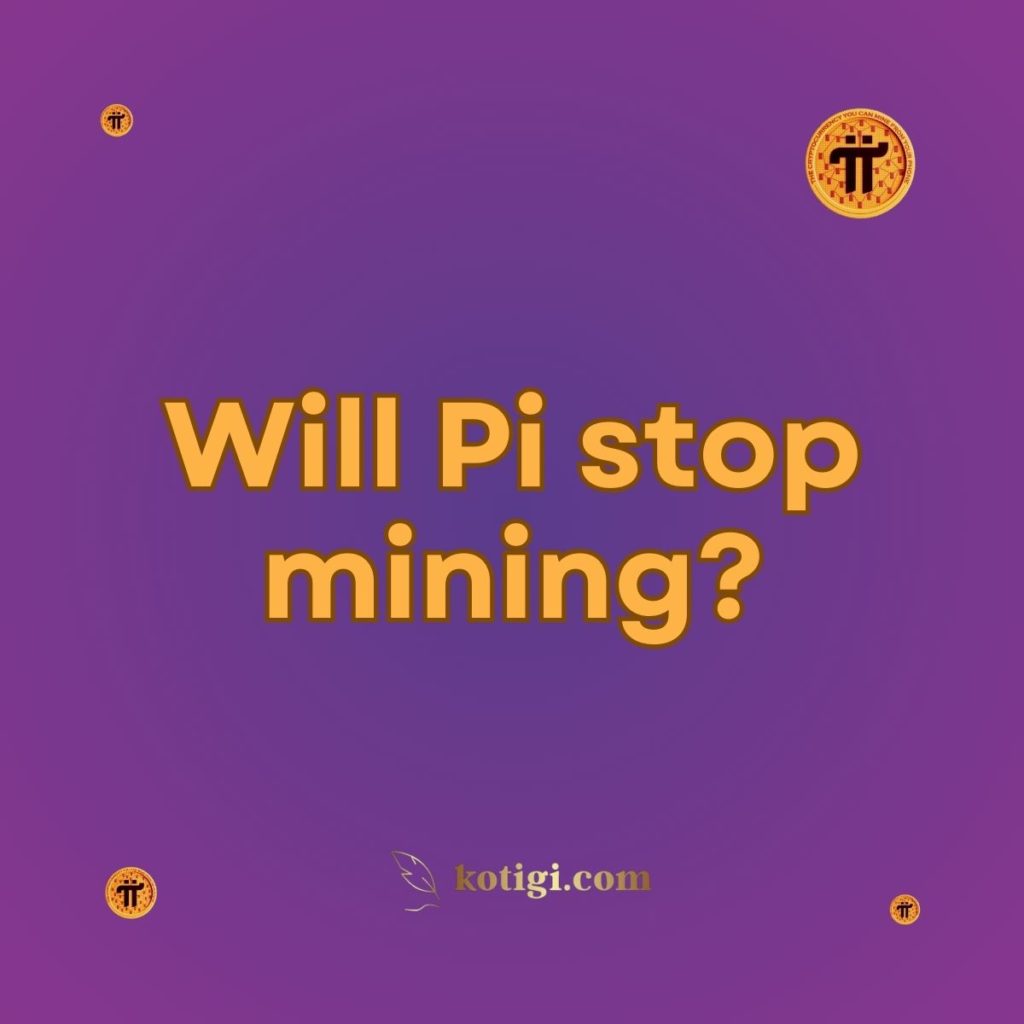
Pi Network has captivated millions of users worldwide with its novel approach to cryptocurrency mining, offering an accessible way to earn Pi coins directly from your smartphone. As Pi’s user base continues to grow, there are inevitable questions about the sustainability of Pi mining. Many users are wondering: Will Pi stop mining? This blog post will explore the future of Pi mining, how the Pi Network plans to handle the shift to its Mainnet, and what that means for both current and prospective miners.
What is Pi Mining?
Pi’s Unique Approach to Mining
Pi Network stands out from traditional cryptocurrencies by allowing users to mine coins on their mobile devices, without the need for specialized hardware or significant energy consumption. Pi uses a different consensus algorithm compared to Bitcoin or Ethereum, relying on the Stellar Consensus Protocol (SCP) instead of proof-of-work (PoW). This means that users don’t need to solve complex mathematical puzzles or run power-hungry mining rigs.
Mining Pi is simple: users just have to log into the Pi app and tap a button once every 24 hours to earn coins. The process is light on resources, meaning it won’t drain your phone’s battery or significantly use up data. Pi mining continues to attract new users, but as the network matures, there are discussions about how long this opportunity will last.
How Pi Mining Currently Works
Currently, Pi mining is in what the team calls the Testnet phase, where users can earn Pi coins but are not yet able to trade or withdraw them. The mining rate decreases as more users join the network, with the goal of maintaining scarcity and value for Pi coins. New users are encouraged to join by forming security circles, a key part of Pi’s decentralized security model. The more people who join, the lower the individual mining rate for each user, as part of the project’s design to eventually taper off mining.
Will Pi Stop Mining After the Mainnet Launch?
Transition from Testnet to Mainnet
Pi Network is currently in the process of transitioning from its Testnet to its Mainnet. Once Pi enters the Mainnet, the network will no longer be centrally controlled by the core team, and users will have the ability to exchange Pi coins for goods, services, or other currencies. This is a major milestone in Pi’s development, as it moves from being a speculative project to a potentially viable cryptocurrency.
As the network prepares for the Mainnet, the question of mining becomes critical. Pi’s core team has made it clear that mining will eventually stop or drastically change once a certain number of users have joined the network or certain milestones are met. However, mining will not stop immediately at the Mainnet launch. Instead, the network plans to slow down mining over time to preserve scarcity and maintain the value of Pi coins.
Phasing Out of Mining
While Pi won’t immediately stop mining, the current plan is to phase out mining as the network grows. This means that over time, the mining rewards will continue to decrease as more users join. Eventually, when the network reaches its predetermined cap on user growth or supply, mining will cease altogether.
It’s important to note that once Pi transitions to the Mainnet, the focus will shift from earning coins through mining to using and spending Pi coins within the Pi ecosystem. The Pi team envisions a robust marketplace where users can buy and sell goods and services using Pi coins. This shift is designed to encourage the practical use of Pi rather than simply accumulating it through mining.
What Happens After Pi Stops Mining?
Earning Pi Through Other Methods
Once mining is phased out, users will need to find other ways to earn Pi coins. One potential method is through participating in the Pi Network’s marketplace, where users can exchange goods and services for Pi. There may also be opportunities to earn Pi through staking, running nodes, or participating in decentralized governance activities within the network.
Additionally, early adopters who have already mined a significant amount of Pi may be able to leverage their holdings in future transactions once Pi gains real-world value on the Mainnet.
The Future of Pi’s Ecosystem
The long-term vision for Pi is to create an entire ecosystem where Pi coins can be used as a medium of exchange, similar to how other cryptocurrencies like Bitcoin or Ethereum are used today. In this ecosystem, users will no longer need to mine coins, as the supply will be fixed and distributed among the network participants.
Instead of relying on mining to earn Pi, users will be able to engage with the Pi ecosystem by spending, trading, or staking their coins. The success of this ecosystem will depend on the number of merchants and users who are willing to accept Pi as a legitimate currency.
Why Will Pi Mining Stop?
Maintaining Scarcity and Value
One of the main reasons Pi mining will eventually stop is to ensure that Pi retains its value. In the world of cryptocurrency, scarcity is a key factor in determining a coin’s value. If Pi continues to be mined indefinitely, the supply of Pi coins would grow without limit, potentially devaluing the currency.
By setting a cap on the number of Pi coins that can be mined, Pi Network aims to create a sense of scarcity, which in turn could help Pi achieve and maintain a stable value on the open market. This is similar to how Bitcoin has a fixed supply of 21 million coins, contributing to its value as a store of wealth.
Preventing Network Congestion
Another reason for phasing out mining is to prevent network congestion. As more users join the network, the consensus mechanism that allows users to mine Pi could become slower or less efficient. By gradually reducing mining rewards and eventually stopping the mining process, Pi Network can ensure that the system remains scalable and efficient as it grows.
When Will Pi Stop Mining?
Current Mining Rate Decline
The mining rate for Pi has already started to decline. As the Pi user base grows, the individual mining rewards for each user are reduced. This process will continue until Pi reaches a certain level of user growth or network maturity, at which point mining will stop altogether.
While the exact timeline for when Pi will stop mining is not publicly available, users should expect mining rewards to continue decreasing over the next few years as the project approaches its Mainnet launch and beyond. It’s likely that mining will continue in some capacity during the initial stages of the Mainnet but at a much lower rate than what users are currently experiencing.
Pi Network’s Roadmap
The Pi Network team has outlined a rough roadmap for the future of the project, including the transition to the Mainnet and the eventual cessation of mining. However, the specific details of when mining will stop depend on the network’s growth and the completion of key development milestones.
In the meantime, users who are currently mining Pi should continue to do so, as this could be one of the last opportunities to accumulate coins before the network reaches its cap.
Conclusion
Will Pi stop mining? Yes, Pi Network plans to gradually phase out mining as the network grows and transitions to its Mainnet. While the exact timeline is unclear, mining rewards will continue to decline as more users join, and mining will eventually stop altogether to preserve scarcity and value for Pi coins. Users who want to accumulate Pi should take advantage of the current mining opportunities, as they will likely diminish over time.
Will Pi stop mining?
Yes, Pi Network plans to phase out mining as the network grows. Mining rewards will decrease over time, and once certain milestones are reached, mining will stop altogether.
Key Takeaways
- Users should mine Pi now, as this may be one of the last opportunities to earn coins before mining is phased out.
- Pi Network will eventually stop mining once the project reaches certain user growth or supply milestones.
- Mining rewards are already decreasing, and they will continue to decline as more users join the network.
- Pi Network’s Mainnet launch will be a key turning point, shifting the focus from mining to using Pi in the ecosystem.
- Pi coins will retain value through scarcity, similar to Bitcoin’s capped supply model.





